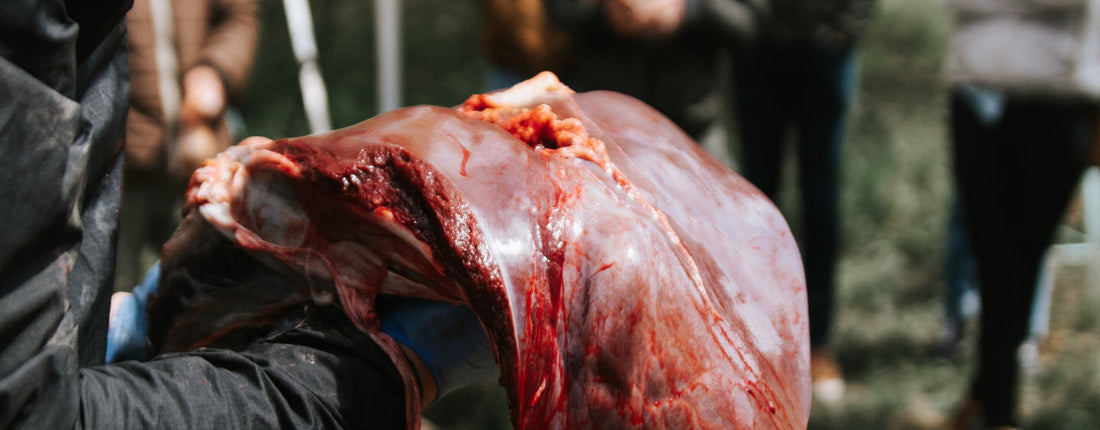Eat Like a Wolf: Why You Should Eat More Organs
Force of Nature

Eat Like a Wolf: Why You Should Eat More Organs
When asked to choose an optimal cut of meat, you probably gravitate toward something like a giant grass-fed ribeye, a slow-cooked hunk of prime rib, or, if you like to keep things simple, maybe a juicy grass-fed bison burger. Indeed, visit your favorite steak restaurant and these items will probably be some of the most expensive on the menu. But muscle meats like these weren’t always considered the most prized cut of an animal. In fact, in the animal world, organ meats are are still the go-to reward for a successful kill.
When a pack of wolves take down an elk, moose, or deer, the alpha male is the first to dig in, and he goes right for the liver, heart, and kidneys before allowing the rest of the pack to chow down on the muscle meats that are left over. And while most modern humans have flipped the switch on which parts of an animal they prioritize, some more traditional tribes, like the Massai in Kenya and Tanzania, prioritize raw blood, liver, heart,and kidneys for their young male warriors and pregnant women, while the rest of the women and older men consume a greater percentage of fruits and vegetables.

Why You Should Eat Organ Meat
The predators and ancestral tribes mentioned above are guided by a truth the rest of humanity used to know by instinct: Organ meats, or offal, are the most nutritious parts of any animal, and there’s a strong argument to be made that they should be a staple in any human diet.
The nutrient difference between organ meats and every other type of human food is striking. We’re often told to eat our vegetables, but vegetables have nothing on organ meats. Consider, for example, the difference between broccoli and beef kidney. Half a pound of raw broccoli has 31% of the daily recommended value of vitamin B6, while half a pound of kidney has 69%. Just a quarter pound of kidney fulfills the daily recommended amounts of vitamins B1, B2, B6, and B12, as well as copper, niacin (a form of vitamin B3), folate, biotin, iron, and selenium. And the nutrients in organ meats (and all meat) are more bioavailable than in vegetables.
But when it comes to gram-for-gram nutrient value, nothing beats liver. Liver contains more B12 (one of the most essential vitamins, and the one most lacking in those on vegan and vegetarian diets) than any other food source: three times as much as kidney and 17 times the amount found in ground beef. In addition, liver is chock-full of vitamin A, an essential vitamin in which most of the general population is deficient. You’ve probably been told that you should eat carrots for their retinol and beta-carotine, both of which the body converts to vitamin A, but half a cup of raw carrots contains only 10,692 IU of retinol and .534 milligrams of beta-carotine. A single gram of beef liver, on the other hand, contains 53,000 IU of vitamin A. Red muscle meat, by the way, offers just 40 IU per gram.
Perhaps the best thing about all this nutrient density is that it often comes at significantly cheaper cost than muscle meats. A visit to your local butcher might get you grass-fed ribeye at $20 per pound, but the same amount of organ meat can often be had for less than five bucks.
How to Eat More Organs
Granted, most people, especially Americans, don’t find offal to be the most delicious foods in the world. Much of our distaste for organ meats is simply a product of the fact that we’re not used to cooking it; while in many parts of the world things like organ-meat sausages and sweetbreads are staples in any household.
The more you eat offal, likely the more you’ll come to appreciate its often strong flavor—but maybe not. If that’s you, no worries: there are still lots of ways to enjoy organ meats that don’t involve frying up a pound of chopped liver in a pan of butter (although we think doing so is delicious, especially if you soak the liver in lemon juice or milk before cooking). Supplements like fermented cod-liver oil and desiccated organ capsules offer many of the benefits of organ meat without the taste. If you trust your butcher and know the source, you can chop raw liver into tiny pieces, freeze them, and take a gram or two each day with water, like a pill.
Perhaps our favorite way to incorporate organ meats into our diet, though, is by combining them with our favorite muscle meat. That’s why we created our Ancestral Blend. Force of Nature’s Ancestral Blend combines our regenerative, grass-fed, grass-finished ground beef or bison with liver and heart, formulated in a combination that has comparable taste and texture to regular ground meat. You can use our Ancestral Blends in place of ground meat in any of your favorite recipes: make burgers, chili, or whatever else suits your appetite. It’s by far our most nutritious product.
These blends provide the traditional nourishment your body craves while keeping the modern palate in mind. Now go out there and eat like a wolf, we think you will enjoy thriving on these nutrient rich animal cuts!

